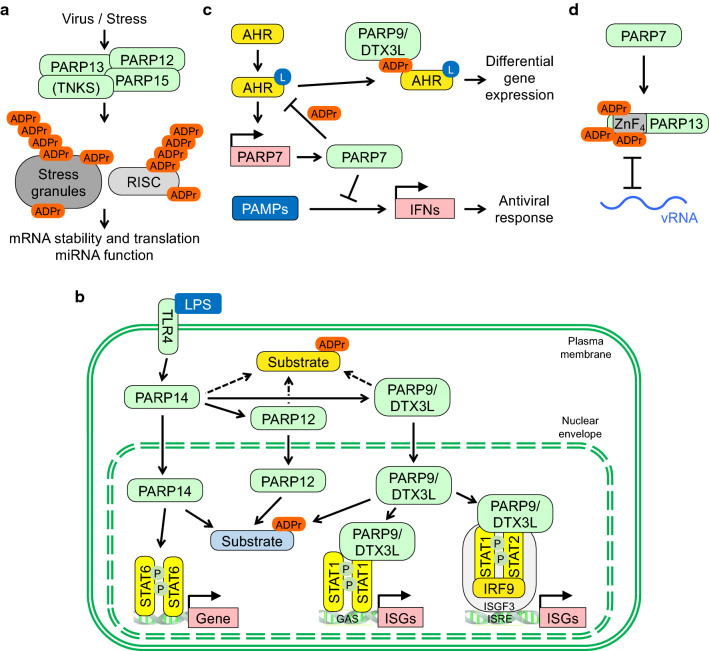Fig. 3.
Cellular processes controlled by PARP networks. a Different forms of stress, including viral infection, stimulate stress granule (SG) assembly. Several PARPs are associated with SGs. G3BP1 and 2 are ADP-ribosylated and these two proteins are necessary for SG formation and for replication of certain viruses (see text). Moreover, components of the RNA-induced silencing complex (RISC) are substrates of PARPs. Both SGs and RISC are controlling the stability and availability of mRNAs, processes targeted by viruses. b The interactions of the indicated IFN-inducible PARPs are summarized. The activation of TLR4 by LPS promotes the nuclear translocation of PARP14 as well as PARP12 and PARP9/DTX3L. A shift in substrate ADP-ribosylation from the cytosol to the nuclear compartment is proposed. Moreover, PARP14 and PARP9/DTX3L have cofactor function and influence ISG expression. Not shown is the suggested antagonism of PARP14 and PARP9 in regulating STAT1 (see text). c Ligands (L) such as xenobiotics and microbial metabolites activate AHR, which stimulates PARP7 expression. PARP7 in turn inhibits AHR function, at least in part through direct MARylation. MARylated AHR is read by PARP9 resulting in differential gene expression. PARP7 also modifies and inhibits TBK1 (not shown), a kinase activated by certain PAMPs, and thus prevents the expression of IFN genes. d PARP7 MARylates PARP13 at cysteines located in the ZnFs, which is suggested to interfere with the ability of PARP13 to sense CpG-rich vRNA

